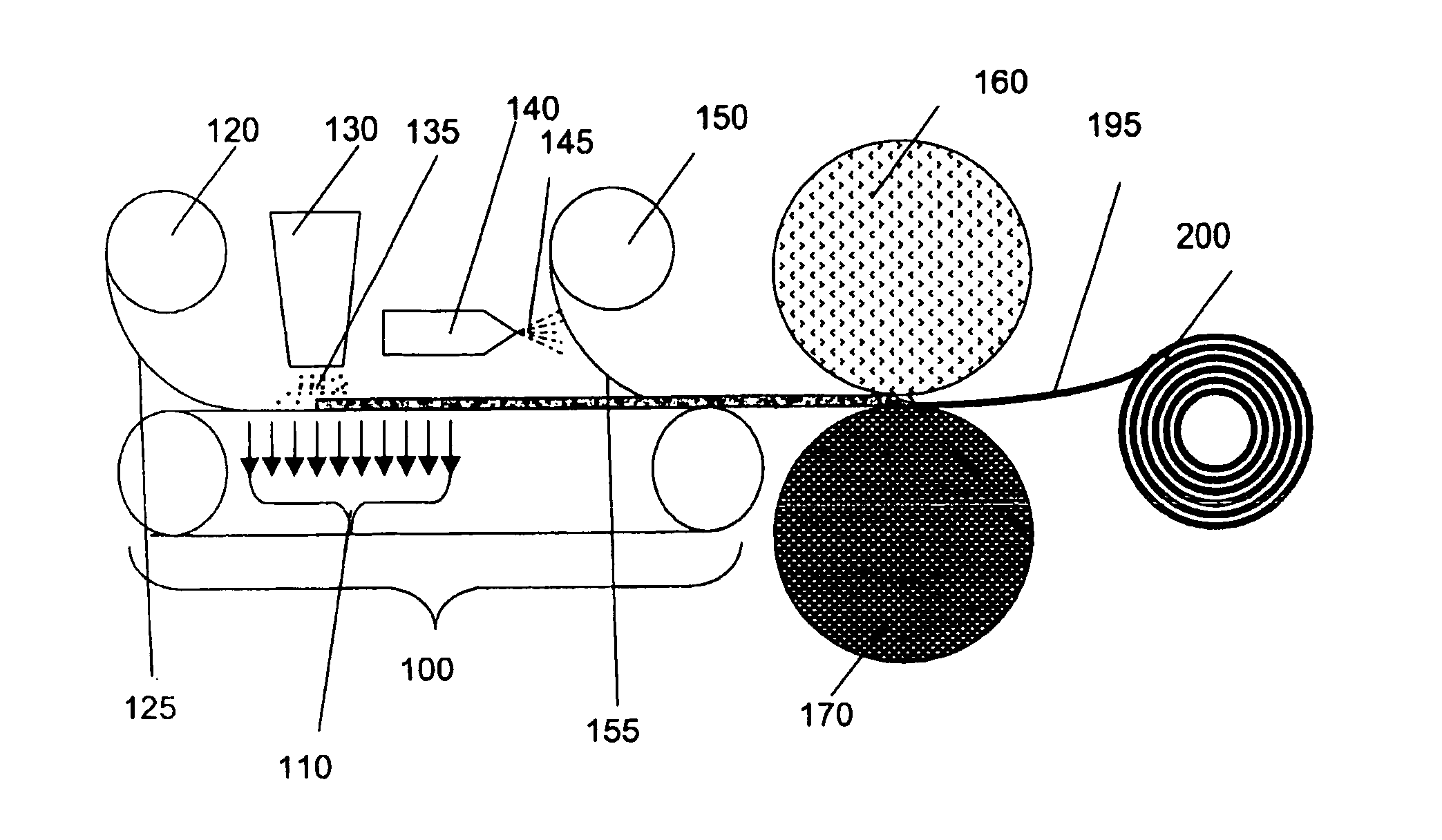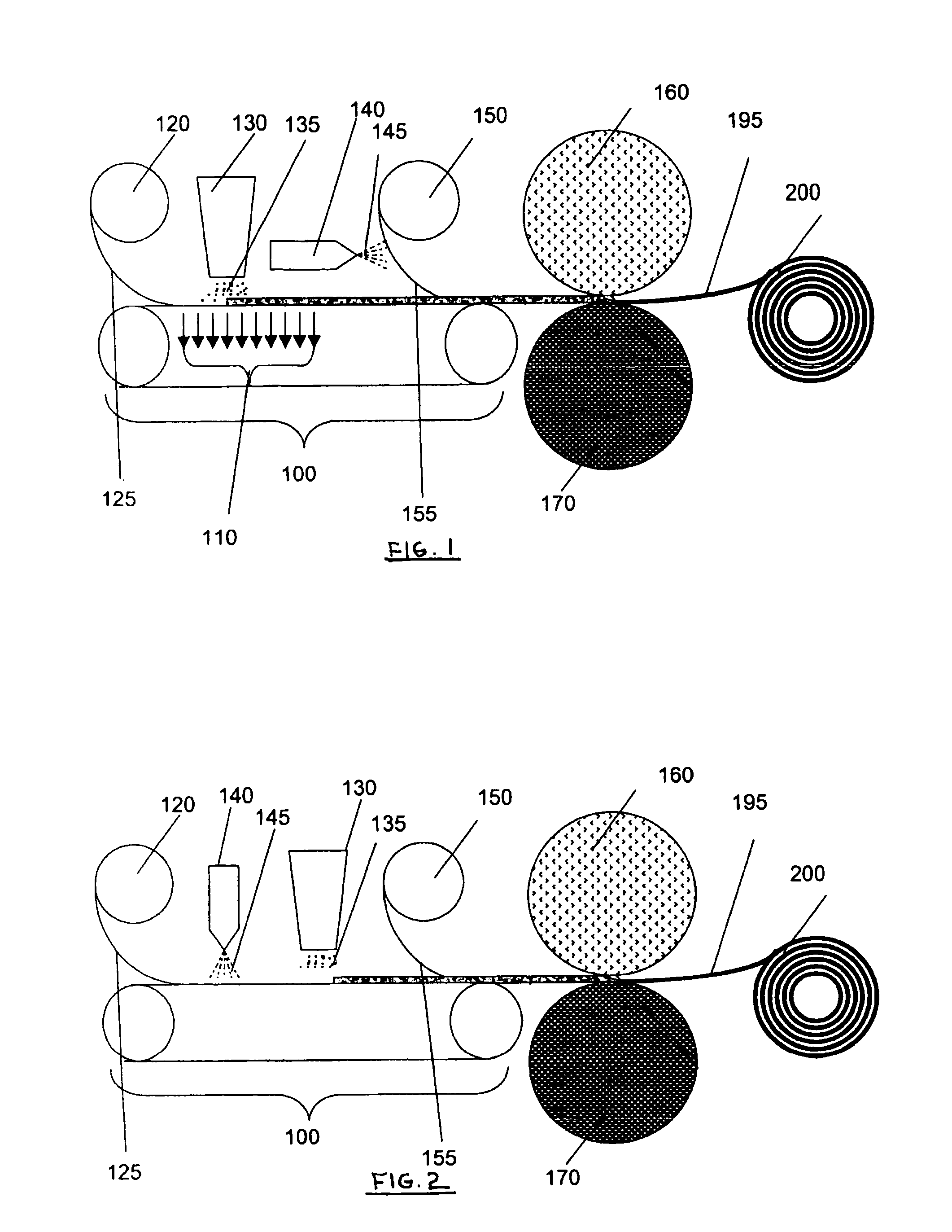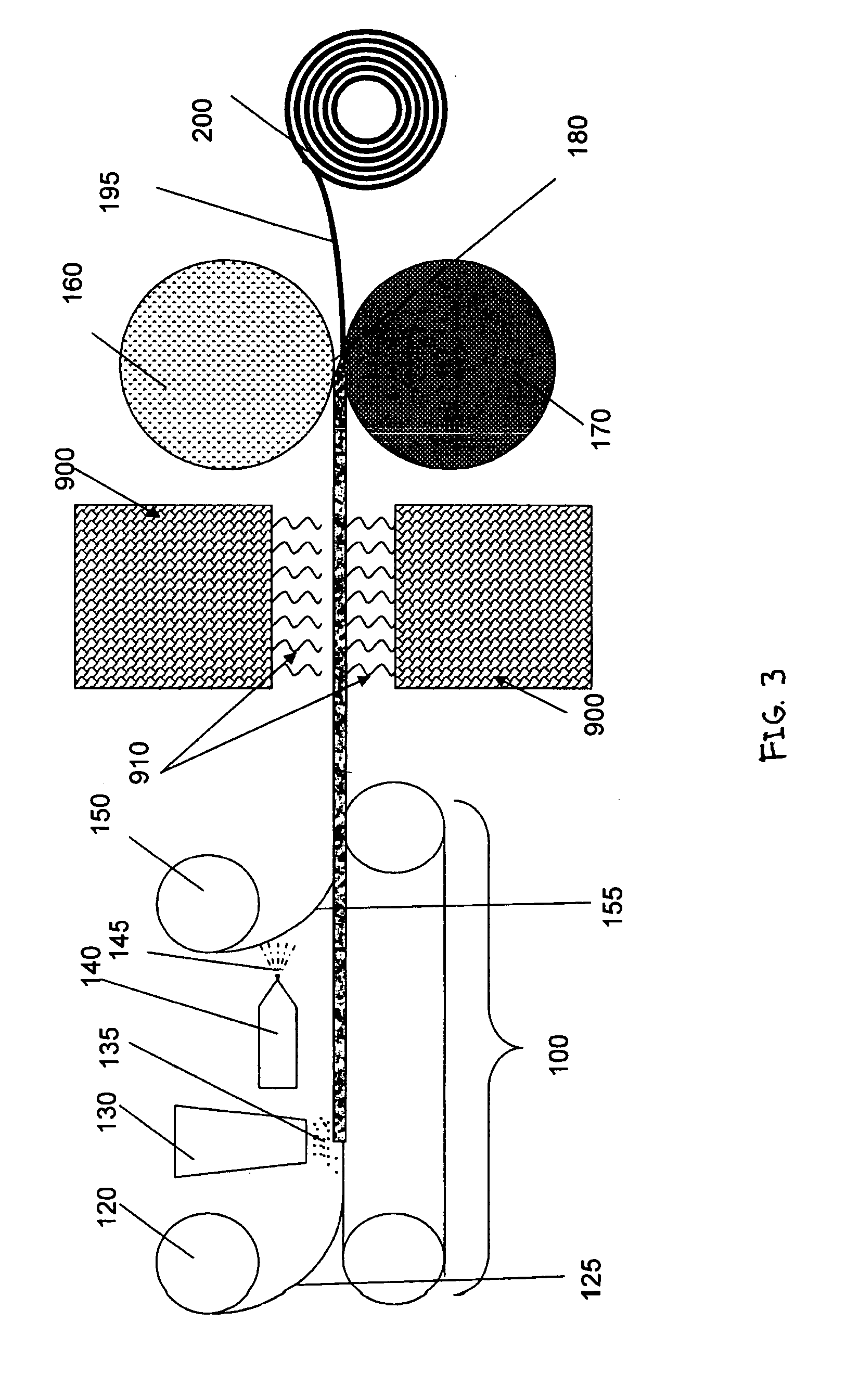Method of making an absorbent composite and absorbent articles employing the same
a composite and absorbent material technology, applied in the field of absorbent composites, can solve the problems of poor absorbency, poor stability of sap, and large volume of absorbent matrix relative to topsheet, backsheet and sap, and achieve the effect of sufficient absorbency
- Summary
- Abstract
- Description
- Claims
- Application Information
AI Technical Summary
Benefits of technology
Problems solved by technology
Method used
Image
Examples
Embodiment Construction
[0040]Upon review of the detailed description and the accompanying drawings provided herein, it will be apparent to one of ordinary skill in the art that an absorbent composite made according to the present invention may be used in disposable absorbent articles, and more particularly, in disposable absorbent articles, such as diapers, training pants or other incontinence products. Accordingly, the present invention shall not be limited to the structures and processes specifically described and illustrated herein, although the following description is particularly directed to an absorbent composite that is used in a disposable diaper. The term “absorbent article” or “absorbent garment” with which the present invention is associated, includes various types of disposable articles and garments which are placed against or in proximity to the body of the wearer so as to absorb and contain various bodily exudates, bodily fluid, or biofluid.
[0041]Turning now to the figures, FIG. 1 shows one...
PUM
 Login to View More
Login to View More Abstract
Description
Claims
Application Information
 Login to View More
Login to View More - R&D
- Intellectual Property
- Life Sciences
- Materials
- Tech Scout
- Unparalleled Data Quality
- Higher Quality Content
- 60% Fewer Hallucinations
Browse by: Latest US Patents, China's latest patents, Technical Efficacy Thesaurus, Application Domain, Technology Topic, Popular Technical Reports.
© 2025 PatSnap. All rights reserved.Legal|Privacy policy|Modern Slavery Act Transparency Statement|Sitemap|About US| Contact US: help@patsnap.com



